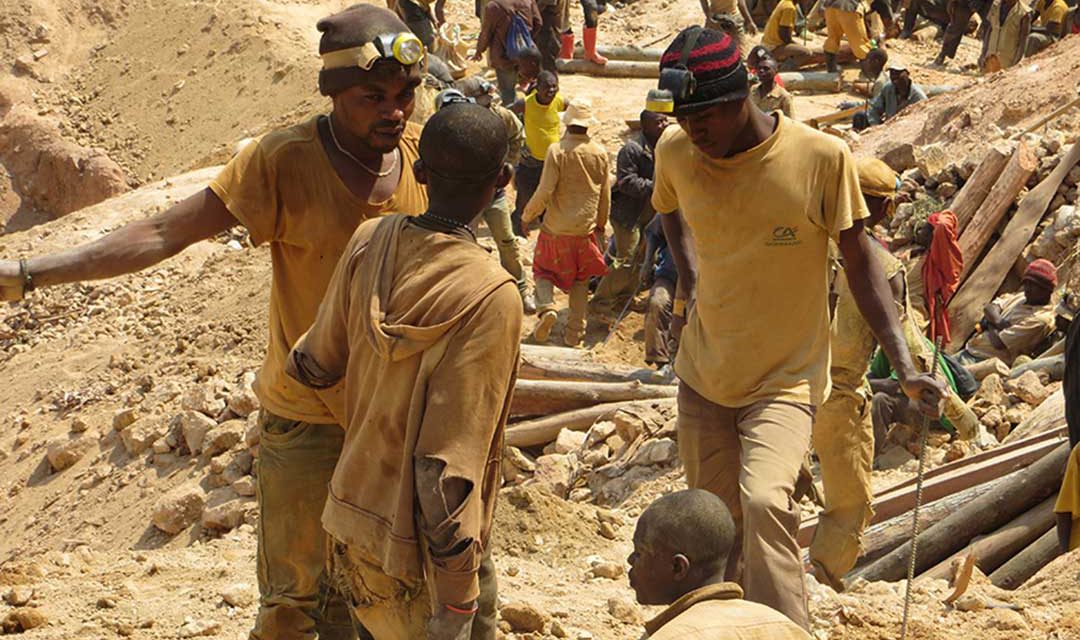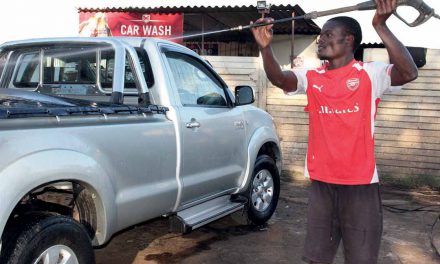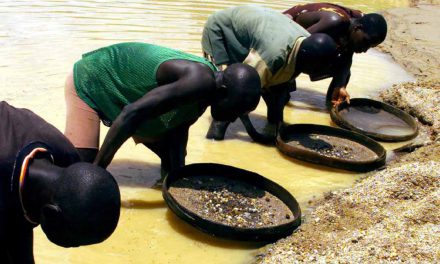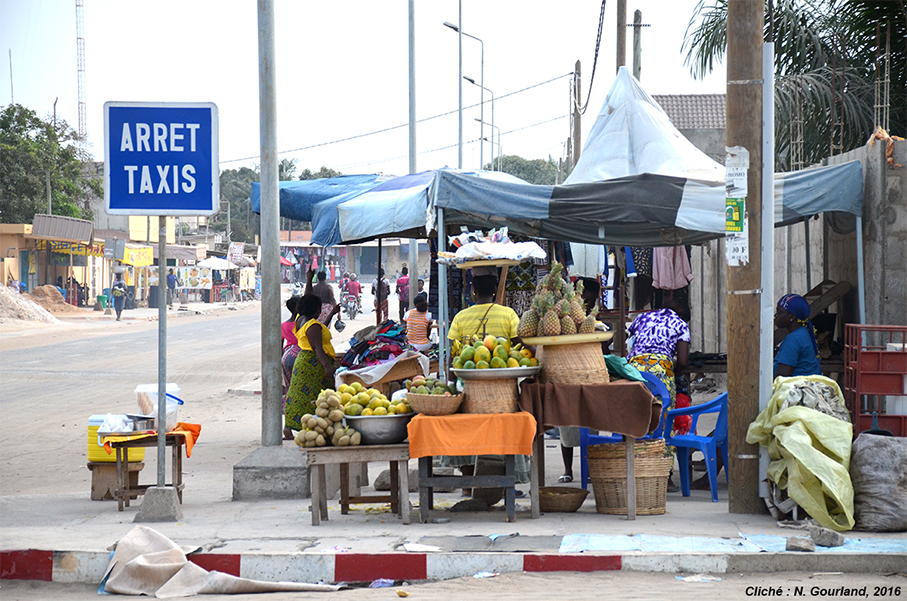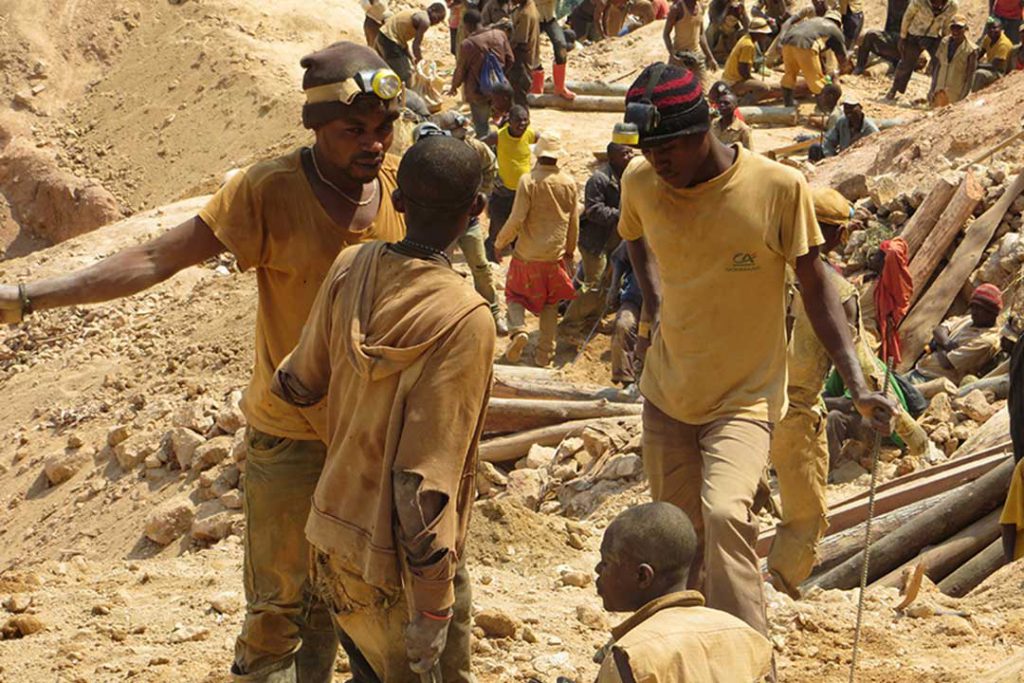
Artisanal miners, DRC Image supplied
Despite the hard work, informal mining in the eastern Democratic Republic of Congo offers many poor people an opportunity of an income
Aristide* starts his day by making the long walk from his home to the mine. It’s the middle of the dry season, and the landscape is cloaked in dust. It usually takes him around an hour, and this morning, he has a lot on his mind.
Last night, a section of his mineshaft collapsed. No one was hurt, but he can’t afford to be out of production for long. He has debts to repay, and promised his children their new home would be finished by the end of the year. He needs to get to the mine, assess the damage, and get things back on track as soon as possible. A bus rattles past. He chokes down the dust, and labours on up the hill. Aristide works at an artisanal mine in South Kivu Province in the eastern part of the Democratic Republic of Congo (DRC), which borders on Rwanda and Burundi.
About 150,000 people work at roughly 900 mine sites in the area, though only a dozen officially recognised Artisanal Exploitation Zones (ZEAs) have been established there. Four out of five of these miners are thought to be mining gold. The other major minerals produced in the province are cassiterite and coltan. The mine is the property of several local landowners, who receive a negotiated percentage of production. According to a 2015 census by local civil society organisation Observatoire Gouvernance et Paix, some 2,211 people work at the mine. All of the work is done using rudimentary tools and hard manual labour.
The minerals are excavated from mineshafts dug dozens of metres into the earth, after which they are subjected to basic treatment processes such as mineral crushing and washing. As an experienced miner, Leonce, told Africa in Fact: “The work that we do is very difficult. You need a lot of energy. You must be courageous … the shafts can cave in and someone can lose their life.”
The mine is run by around 40 shaft managers, all locals and members of the same ethnic group, the Bashi. The shaft managers have teams of between five and 80 workers. Each shaft manager has an assistant and a secretary – often family members – who assume additional organisational responsibilities in return for a greater share of production. All the shaft workers are male and generally aged between 20 and 40 years old.
Artisanal mining has become one of the most important sources of work and livelihood in the DRC. In 1983, President Mobuto Sese Seko liberalised artisanal mining, and encouraged citizens to exploit and trade in minerals as a way to get by during a time of economic hardship. In 2010 the World Bank estimated the number of Congolese directly or indirectly dependent on artisanal mining at between eight and 10 million, or 14 to 16% of the total population.
The sector is legalised and to a certain extent protected by the country’s 2002 Mining Code and 2003 Mining Regulations. Artisanal miners must work in officially recognised ZEAs, to own an artisanal miner’s accreditation card and to comply with security and environmental protection regulations. However, few ZEAs have actually been recognised, meaning most artisanal mining is practised illegally. Most miners do not own valid accreditation cards.
Moreover, artisanal miners are not allowed to work in concessions ceded to industrial mining companies, which account for the vast majority of the country’s best mineral deposits. As of February 2017, in South Kivu some 30 exploitation permits were granted to mining companies covering an area of 6,017km2. One project – Canadian miner Banro’s Twangiza gold mine – had reached production stage.
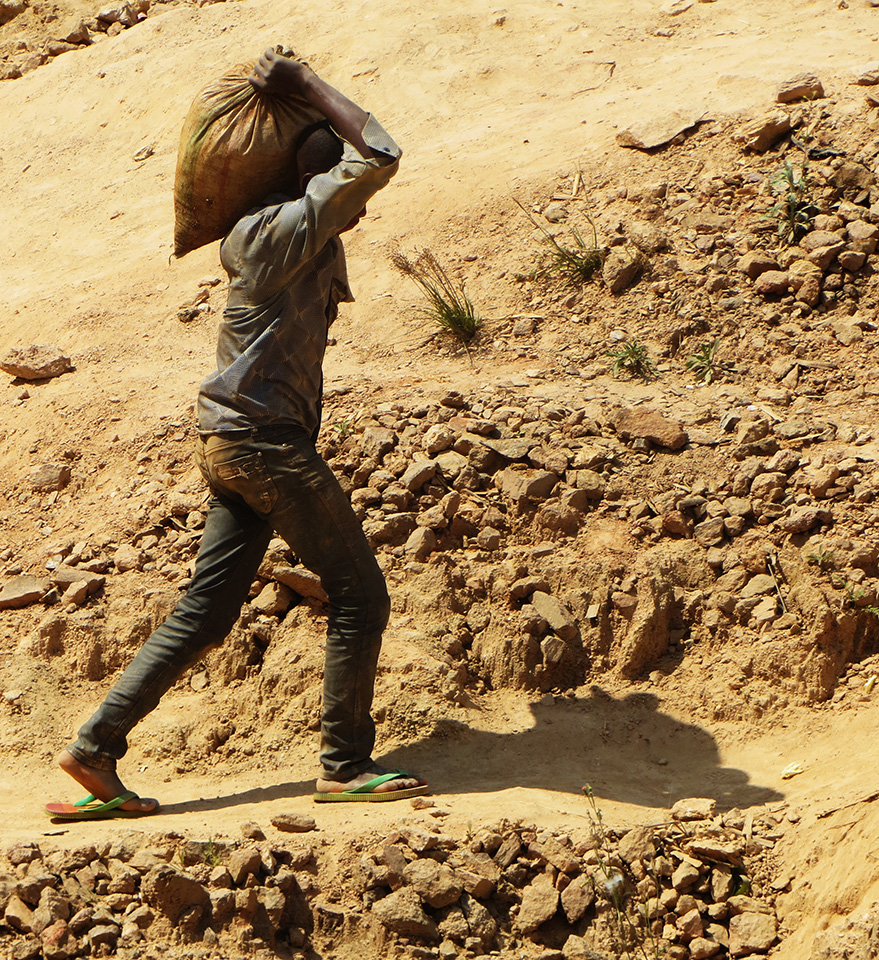
Artisanal miner in the DRC. Image supplied
Back at the artisanal mine, the sun is reaching its zenith in the hazy blue sky, and the first white sacks of the day are being dragged out of the shafts. Weighing around 30kg, sacks of chiselled rock are then passed to porters who carry them, balanced on their heads, a kilometre or so down the hill to be treated. Between three to four hundred of the 2,200 at the mine work as crushers and washers, all of them male. There are also about 100 female water carriers of all ages, who transport water in yellow plastic containers from the nearby river to the mine site.
The gold that comes out of this process is sold to the 70 or so traders positioned around the mine during the day, and who can be easily distinguished from the labouring masses by their black briefcases, brown cowboy hats and clean clothing. Some of the gold may be sold to one of the few trading houses in the nearby town. The sector is often associated with excesses of violence and abuse, but listening to artisanal mine workers recount their experiences reveals a more complex picture. Their daily realities vary greatly, both within and across different sites.
In 2015, researchers working for the International Peace Information Service (IPIS) visited 200 artisanal mine sites across South Kivu, employing an estimated 41,111 workers. Of these workers, 81% were reported to be working under the presence of the national army, 3% under the presence of non-state armed groups and 16% free from the presence of either. In around two thirds of the mines where an armed group was present, soldiers were reported to be engaged in illegal activities such as levying taxes, pillaging, using forced labour or directly involved in mineral production and trade.
As one miner, Philippe, told me of his experience at a previous site: “We were forced to give the soldiers contributions of $1.50 a week. If you refused, they would throw you in jail. To get out of prison, the soldiers made you sign a contract in which you agreed to work for them for two months and give them everything.”
Yet while violations do occur in some areas, in others they are absent. At the artisanal mine that was the centre of the research site that I focused on as part of my doctoral research, the national army was present and levied illegal taxes, but it generally refrained from other violations.
Conflict at the mine was regulated by an elected committee, which met daily and resolved disputes through open meetings held in its on-site office. Most disputes were related to petty crime committed on the site or arguments between workers over the sharing of production. Repeat offenders were excluded with the help of the informal “mine police” – all former armed-group members – and, if necessary, the state police.
The workers don’t benefit from the formal labour rights accorded to industrial mineworkers, such as paid leave, medical insurance or the right to organise. Yet these can be negotiated. Earlier this year, porters held a three-day strike to protest a pay decrease enforced upon them by shaft managers. “We’re angry, and we have to do something,” one of their leaders told me. They successfully overturned the decision.
It is also common to learn that a miner missing through illness continues to be paid his share of production while away, or for a group of miners to contribute to medical or funeral expenses for a worker’s family member.
At my own research site, several thousand artisanal workers were forcibly displaced in 2011 to allow for the construction of Banro’s Twangiza mine, but today the majority continue to work in close proximity to the industrial mine. While their presence on Banro’s concession is illegal, the elected committee advocates the importance of artisanal mining to the local economy and the company appears reluctant to displace them for fear of sparking further protest and social unrest. Research by a Congolese undergraduate student, who surveyed 350 of the displaced miners, found that some 77% continue to work in artisanal mining locally, though the company started production around six years ago.
Local artisanal mining is also a site of social stratification. I am presently conducting data analysis as part of my doctoral research to determine whether its role is primarily to solidify pre- existing social differentiation among the peasantry or to unleash new processes of class formation and inequality. However, it is clear that such processes are taking place.
For the local landowners, shaft managers and major gold traders, my data indicates monthly profits of between $800 and $2,000. This has allowed many of them to migrate their families to the nearby provincial capital of Bukavu and achieve a degree of material security and prosperity beyond that available to many in their home villages. Only about 50 of the 2,200 people working at the site belong to this group, or just over 2% of the total number of workers. The remaining 98% earn incomes barely above subsistence level, labouring at the bottom of a global production network and hierarchical system of profit sharing that all but excludes the majority of the workers.
Yet even these modest incomes are critical for the survival of the rural households that receive them. “With what I earn in the mines I have already bought my father a cow. With God’s help, I intend to buy him more. And, through this work, I can pay the school fees for my two little brothers. I am improving my life,” a young miner told me.
This is typical of the experience of many workers, and serves to underline the importance of artisanal mining as a livelihood strategy for tens of thousands of rural Congolese families who have seen their on-farm subsistence capacity and off-farm employment opportunities dwindle over several decades as a result of government policies, war and demographic pressures.
This is, in my view, the most useful way to think of and engage with artisanal mining in the eastern DRC. Despite the many risks and the poor working conditions, it is a sector that the rural poor enter into voluntarily and en masse as a means of support for themselves and their families in the face of limited possibilities. Assisting these workers requires embracing this reality, which is sometimes lost in the NGO advocacy reports and media headlines that dominate public perceptions.
* All names are fictitious, to respect requests for anonymity.

